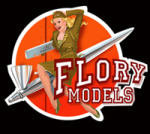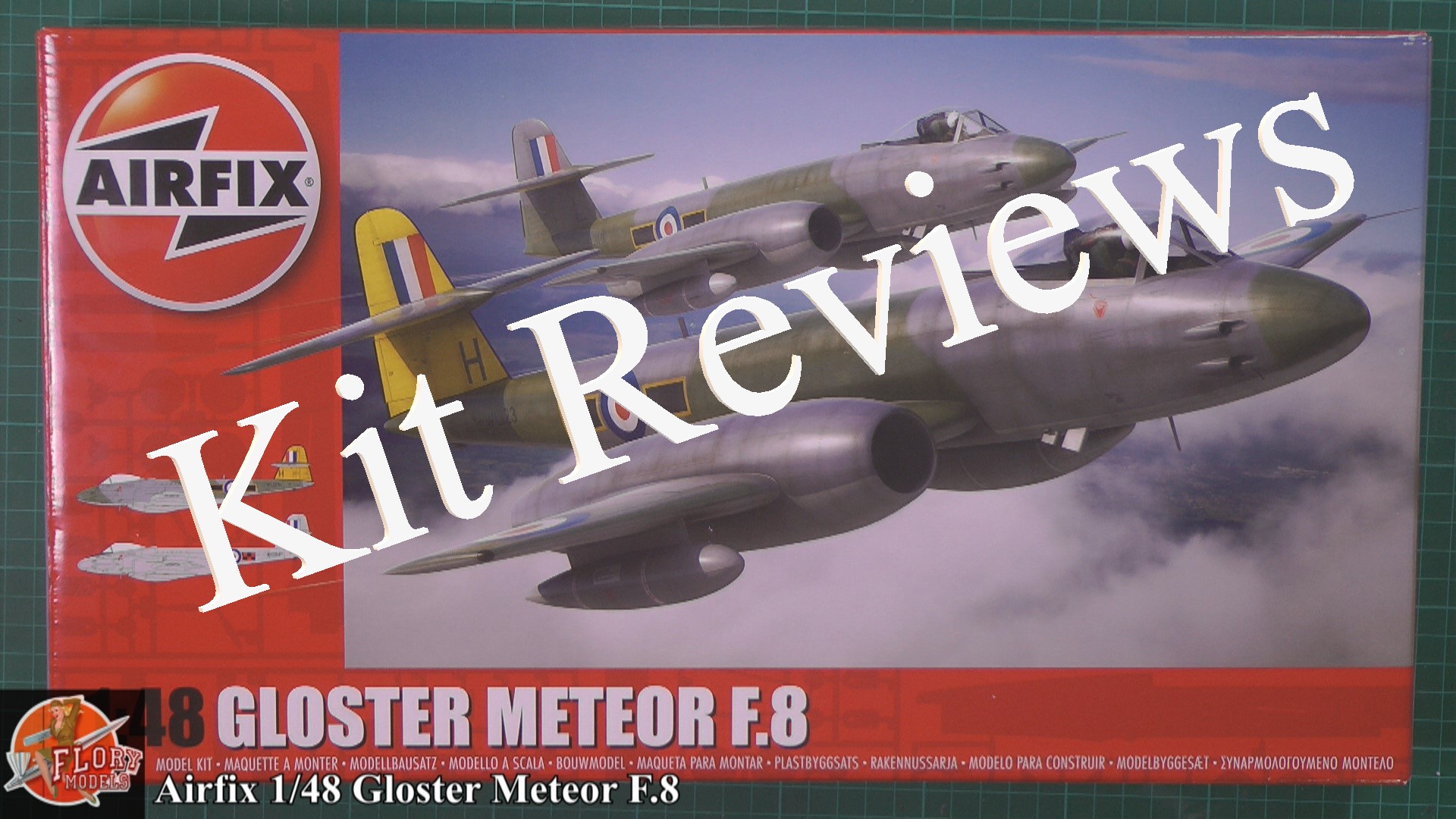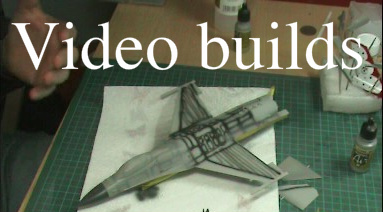Trumpeter 1/72 RA-5C Vigilante
RVAH-9 ‘Hoot Owls’
Tools and Sundries used
Tamiya Extra Thin Cement
Modelsforsale.com Sanding Sponges
Tamiya Liquid Surface Primer
Mr Surfacer 1200
Olfa P-Cutter
Johnsons Klear
Pacer Zap-A-Gap CA glue
Bare Metal Foil
Talcum Powder
Tamiya Making Tapes
Isopropyl Alcohol
Low Odor White Spirit
Paints and Weathering
Tamiya XF-1 Flat Black
Tamiya XF-2 - Flat White
Tamiya XF-52 Flat Earth
Gunze Sangyo H51 – Light Gull Grey
Gunze Sangyo H77 – Tire Black
Black and Burnt Umber Artists Oil Paints
Alclad II - Jet Exhaust
Alclad II - Aluminium
Xtracrylix Flat Varnish
This is a kit that I have had for a couple of years now, and never got around to building. Given a prod by an American friend I finally opened up the box to build it up.
On opening the box you are confronted by 5 sprues containing the parts (4 plastic, 1 clear) On inspection the detail on the kit is nice, but rather heavy in respect of the rivets plastered all over the kit. There are 2 decal options provided in the box, both of which are shore based detachments, rather than assigned to carriers. These are for RVAH-3, The Sea Dragons, and RVAH-9 The Hoot Owls, both US Navy.









Construction.
As usual, the construction begins with the cockpit. There are quite a number of parts involved for a 1/72 cockpit. I counted a total of 39 of them in there! Included in the kit is a clear sheet to be used behind the instrument panels to provide instruments. I used this and it did work quite well, although in such a small scale it is rather hard to see in there.






Everything in the cockpit fits together nicely, and the whole assembly fits firmly into the fuselage halves.



Annoyingly the front undercarriage leg requires fitting to the bay before the fuselage halves are mated due to the thickness of the parts inside. I did bang this leg a few times during the construction phases, but luckily it was strong enough to survive the rough handing!
I then moved on to construction of the wings. The kit is broken down into a quite a number of pieces for 1/72 scale. For example, each wing is in 8 pieces, with each flap being in 2 halves. In some ways this is better as it does eliminate the possibility of sink marks on the outer faces of the flaps. There is the option of displaying the wings with the tips normal or folded. I chose to have them in the normal position, but this required some careful positioning of the join to avoid a requirement for filling. Another odd point of the fit was that the flaps seemed to be moulded to fit at about a 10 degree drop. This didn’t look right to me, so I ended up chopping off the positioning lugs and fitting them flush instead.



Once again, the tail is provided in 3 pieces so that it can be displayed as either folded or in its normal position. The fit here was not good, and the join required filling and re-scribing of the fold line details.



Next up was putting the fuselage halves together. At this point the instructions had the jet pipes being fitted into the rear before joining the halves. I checked out that they would fit in after construction, and they would! So I chose to leave them out until the end, making the painting phases easier and reducing the masking required. The fuselage fit was OK, but did need some attention in places with filler.
On the lower side there is a large area at the tail end that is a square plate. Around this there are 2 rather chunky sprue lugs which need to be carefully removed before the plate can be fitted. The plate itself was a poor fit and I decided to fill the area and re-scribe the detail afterwards. The rear part of the fuselage around the jet pipes is provided as a separate piece, and again requires some filling to achieve a smooth join.



Once the fuselage seams were all cleaned up I attached the wings. No real drama’s here, but again the join seams required some attention (a recurring theme here!)


Before fitting the intakes, I sprayed them up with Tamiya white and put them together. A largish gap was evident on both intakes when they were mated to the fuselage, and also a small step was unavoidable on the lower part, as the intakes seemed to be very slightly smaller than the main fuselage area where they joined. This was dealt with again with a little CA and talc filler and building up the surrounding area, then fairing it all in to a smooth finish.


On the underside there is a long reconnaissance fairing which houses the cameras and other equipment. As this contained a few small clear pieces I chose to leave it off until later in the process so that I could avoid masking the small clear parts up when painting.
One last job was to attach the nose and clean up the join seam again..

Painting.
Painting began with giving the underside, the tail, and the upper parts of the flaps a thin coat of white. I wanted my Vigilante to have a well used look to it, so I incorporated the weathering into the paintwork. After the initial coat of white was applied, I shaded all of the panel and rivet lines with a fine coat of Tamiya Sky Grey. This works far better when shading white, as it is not quite a bold as a black, or as difficult to cover properly.


Thinned white was then applied to the underside until the desired effect was achieved.


The white areas were then masked with Tamiya tape in preparation to apply the Light Gull Grey. Again I used the same process as the white but shaded the panel and rivet lines with a slightly darkened mix of the Light Gull Grey, made by adding a touch of black to the original colour.

The leading edges on the Vigilante are a natural metal finish, so these were masked up and Alclad II Aluminium was used to good effect.
An oil wash was mixed from some black and burnt umber artists oil paint, and thinned with some white spirits. This was applied to the undercarriage bays, legs, and doors to dirty them up.

On to decalling. The Trumpeter sheet looks very clean and bright, and in lovely register, so I was looking forward to this part. My initial enthusiasm was soon dampened when the first few decals broke when applying them. Nothing that couldn’t be overcome with some careful positioning, but annoying none the less! I may very well have had a bad set as one half had problems, and the other half of the sheet was fine… either way, the decals survived and I got them on OK in the end.
One small disaster occurred during decaling of the tail fin… I was applying the upper ‘GM’ tail code to the left hand side when there was a cracking sound, and the upper part of the tail separated! There isn’t much of a mating area on the plastic, and as it had been a difficult job to get the join to sit in the right place I had used CA to fix it, then ran liquid cement into the rest of it. It seems that it wasn’t quite strong enough and I was now left with a damaged tail, and my filling and re-scribing job on the fold join was for nothing.


Once I’d finished the decalling, I re-attached the tail top as best as I could and touched up the join with a little Mr Surfacer 1200, masked and lightly sprayed the area white again.
As mentioned before, I wanted a used look to the build so decided to do some post-shading for the first time. The first job was to tone down the very bright markings by applying a very thin coat of the base colour (white or gull grey depending on position) over the top of them. This paint mix must be almost a dirty thinner type mix so that the decal is not covered up at all, but is just dulled. I was very pleased with the result.
Further post shading was applied all over the upper surfaces to replicate some fading in the paint work, and also add some further weathering effects where required.
The canopies were then unmasked and fitted in the open position as the cockpit is rather nice for an out of the box 1/72 scale kit.
Conclusion.
Overall the kit is an awkward build, because attention is required to almost every seam and joint along the way. The surface detail is a little heavy in places, but is still very nice when the whole kit comes together. I have absolutely no ideas on the accuracy of the dimensions of the kit, but it looks like a Vigilante to me, and does make a nice looking model when completed.
Karl Robinson, March 2009.




















